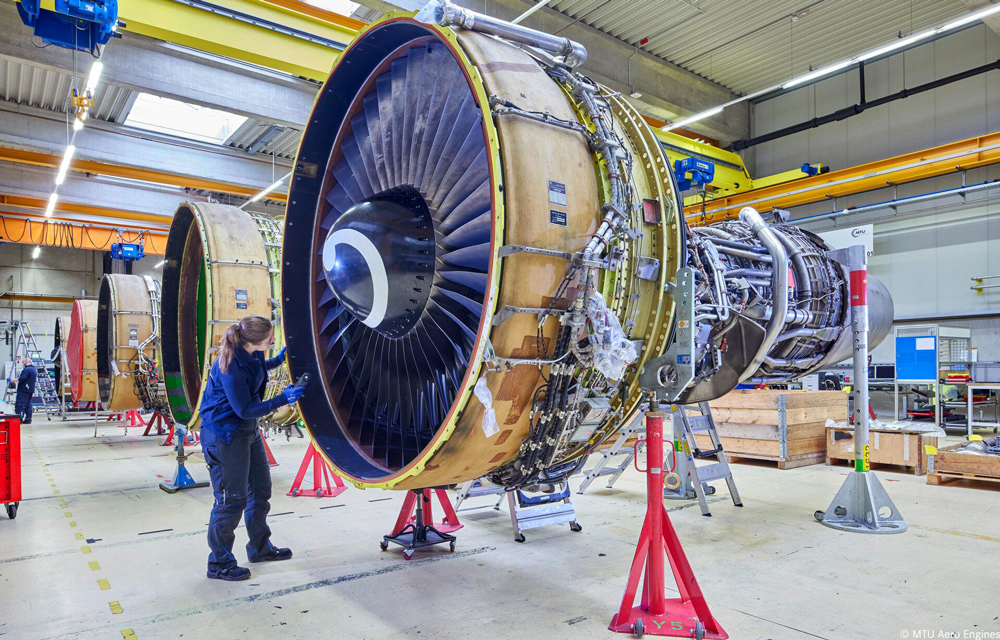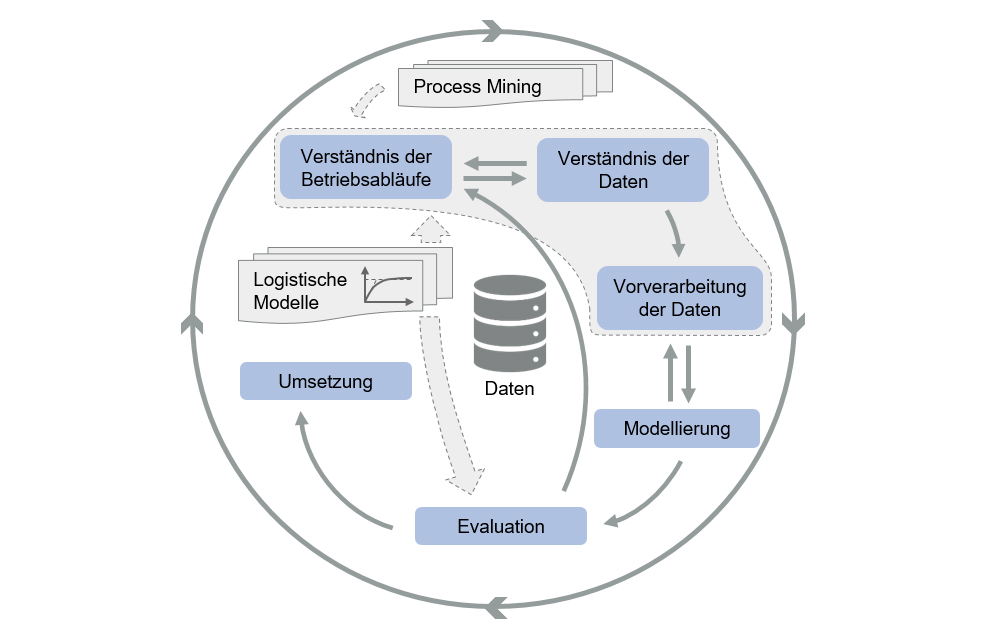The planning of delivery dates in the maintenance of aircraft engines is influenced by various factors. These include, for example, the lack of information regarding the damage pattern of an aircraft engine. The damage in question depends on a variety of conditions. For example, the damage to engine components may vary depending on the place of use of an engine. If an engine is attached to an aircraft that flies predominantly over desert regions, this can generate a different damage pattern than an engine attached to an aircraft that usually flies over the northern hemisphere.
Artificial intelligence to improve production planning
While a rough picture of the damage is already available at the beginning of the maintenance process, the exact damage pattern and thus the exact maintenance effort is not known until the damage diagnosis has been completed. In addition, disruptive influences can also make production planning (especially the planning of due dates) more difficult during the repair process. For example, capacity bottlenecks occurring at short notice can influence the planning of repair orders. This usually also affects all downstream areas, so that a flexible order control is required across various areas.
For production planning and control, this results in the challenge of ensuring high planning quality despite these influencing factors. For this reason, IFA and MTU Maintenance Hannover GmbH are working together to find a way of using artificial intelligence (AI) to take valid delivery dates into account in production planning at an early stage. In addition, the ability to identify the driving forces of longer delivery times also plays a key role in using the results of AI in a practice-oriented manner.
Creation of delivery time predictions
In practice, delivery time predictions are mostly based on experience and expert knowledge. Data-driven AI methods, such as machine learning (ML) models, offer the potential to identify unknown patterns and trends in past data. The knowledge implicit in the data, and thus exploitable, can improve traditional delivery time predictions. This enables companies to more accurately specify delivery and lead times and improve on-time delivery performance.
Often, most of the time in the development of an ML model is spent analyzing the company’s production and logistics processes, identifying relevant data, building data understanding and data pre-processing (see CRISP-DM process, Figure 2). However, the successful identification and processing of the underlying data significantly determine the prediction quality. Input data of (supervised) machine learning prediction models consist of independent variables (features) and a dependent variable. The goal is to generate meaningful features in order to enable a precise prediction. For this purpose, possible influences on lead time and other data must be identified and described appropriately.
The influences on delivery and lead times are complex and driving forces are often difficult to identify. Deviations from planned batches, excessively high order backlogs, deviations from the plan sequence, disruptions in transport or incorrect capacity specifications can boost lead time deviations (from plan). Understanding the logistical interdependencies in production is therefore essential to identify driving forces of lead time deviations and to generate meaningful features.
Logistic process analyses such as correlation analyses to identify the type of sequence can help to improve system understanding and to identify and describe relevant influences on lead time. Furthermore, description and cause-effect models can be used to generate meaningful features. By expressing (logistical) process knowledge in an explicit and formalized way with (generally valid) logistical models, it is possible to usefully supplement the implicit knowledge of decision makers in companies and to support the process of data identification and pre-processing. Furthermore, logistic models can help to validate the prediction results and integrate them into the production planning and control process.
Better understanding – better predictions
AI methods can only process whatever is passed to them: garbage in – garbage out. If inappropriate data sources and thus irrelevant features are used to build predictive models, inaccurate results are likely. Analyses using logistic models and the associated knowledge about the driving forces of lead time deviations increase system understanding and transparency of production processes and ultimately support the generation of meaningful features.
Companies can be empowered to independently create prediction models through a model-based approach. This is favored by numerous innovative developments in the field of machine learning (Low Code, AutoML), which enable the actual use of ML without deeper programming skills.

